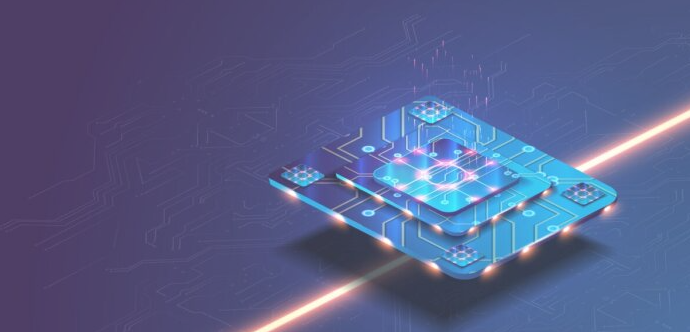中性原子量子コンピューティングの世界市場 2026-2036The Global Neutral-Atom Quantum Computing Market 2026-2036 中性原子量子コンピューティング市場は、既存の超伝導量子パラダイムに挑戦する汎用性の高いマシンであると同時に、次世代の量子アーキテクチャーへの道を切り開くものであり、量子テクノロ... もっと見る

サマリー.png)
中性原子量子コンピューティング市場は、既存の超伝導量子パラダイムに挑戦する汎用性の高いマシンであると同時に、次世代の量子アーキテクチャーへの道を切り開くものであり、量子テクノロジーに変革をもたらすものである。この新分野は、目覚ましい成長の可能性と技術の成熟を示しており、従来の量子コンピューティング・アプローチとは一線を画す、プログラマビリティ、運用の柔軟性、費用対効果といった独自の利点を備えている。
中性原子システムには、他の量子プラットフォームとは異なる利点がある。極低温条件を必要とする超伝導システムとは異なり、多くの中性原子コンピュータは室温で動作可能であり、運用の複雑さとコストを大幅に削減できる。この技術は、光ピンセットを活用して個々の原子をプログラム可能なアレイ内に正確に配置し、異なる計算タスク用に再構成可能な柔軟な量子ビット配置を作り出す。市場拡大の原動力となる主な技術開発には、サイズ、重量、電力特性を劇的に改善するフォトニック集積回路(PIC)の集積化が含まれる。中性原子アプリケーション用に特別に設計された新しい材料プラットフォームは、システムの性能と信頼性を向上させる。おそらく最も重要なことは、これらのシステムが政府機関や研究施設での独占的な使用から、高性能コンピューティング環境や商用データセンターでの主流な展開へと移行しつつあることである。
クラウドへのアクセシビリティは、市場の発展にとって極めて重要である。現在、Amazon BraketとMicrosoft Azureが主なパブリック・アクセス・チャネルを提供しており、Pasqalは最近、Google Cloud Marketplaceを通じて利用可能性を拡大した。このマルチプラットフォーム・アプローチにより、研究者や企業は柔軟な従量課金モデルを通じて100量子ビットの量子プロセッシング・ユニットにアクセスすることができ、多額の設備投資の障壁を取り除くことができる。1量子ビットあたりのドルという費用対効果の指標は改善し続けており、中性原子技術は実用化に向けてますます魅力的なものとなっている。このような経済性は、量子業界誌で好意的に取り上げられることが増えていることと相まって、市場の信頼と採用の勢いが強まっていることを示している。
この技術は、様々な分野の計算の課題に対応します。分散量子コンピューティング・アプリケーションは、中性原子システムのスケーラビリティと柔軟性を活用している。特にデータセンターへの統合は、室温動作とインフラ要件の軽減が既存の企業コンピューティング環境に合致するため、有望な手段となる。中性原子量子コンピューティング市場は、技術的成熟度、経済性、アクセス可能性の拡大が相まって、産業や地域を超えた大きな商機を生み出し、変曲点に立っている。
中性原子量子コンピュータの世界市場 2026-2036」は、急速に拡大する中性原子量子コンピューティング分野を網羅的に分析し、市場ダイナミクス、技術進化、競合環境、10年間の成長予測に関する重要な洞察を提供します。中性原子システムが超伝導量子パラダイムの強力な挑戦者として台頭する中、この包括的な調査では、ハードウェアメーカーからソフトウェア開発者、クラウドプラットフォーム、企業、政府、研究部門にわたる新たなアプリケーションまで、完全なエコシステムを調査しています。
レポートの特徴と内容
市場規模と成長分析:
技術評価とロードマップ:
競合インテリジェンスと企業プロフィール:
市場区分と用途
サプライチェーンと製造分析:
投資と資金調達の状況:
技術的深堀り:
リスク評価と市場課題:
将来の機会
目次1 EXECUTIVE SUMMARY 12
1.1 市場概要と主要調査結果 12
1.2 技術の準備態勢と商業的実行可能性 16
1.3 投資 17
1.4 市場予測 18
1.5 市場プレーヤー 20
2 中性原子技術と製品 22
2.1 技術の進化 22
2.1.1 使用される原子種 22
2.1.2 アクセス性 24
2.2 中性原子コンポーネント 27
2.2.1 原子制御ハードウェアおよび読み出しコンポーネント 27
2.2.2 フォトニックおよびフォトグラフィック・コンポーネント 29
2.2.3 クライオスタット 29
2.2.4 費用 31
2.3 中性原子関連ソフトウェア 33
2.3.1 ソフトウェア・スタック・コンポーネントおよび機能 34
2.3.2 研究室活動 34
2.3.3 使用されるプログラミング言語とフレームワーク 35
2.4 技術の準備 36
2.4.1 技術的限界と課題 37
2.4.2 競合する量子技術を超える利点 38
2.4.3 性能ベンチマークとスケーラビリティ 40
3 市場と応用 42
3.1 応用 42
3.1.1 Neutral Atom Computers上の分散量子コンピューティング 42
3.1.2 データセンターにおけるNeutral Atom Computers 43
3.1.3 Neutral Atom Computers のその他の応用 44
3.2 エコシステム 47
3.2.1 市場制御の力学 47
3.2.2 エコシステムの発展 48
3.3 Neutral Atom Computers のサプライチェーン 50
3.3.1 製造とサプライチェーン 50
3.3.2 コンポーネントの調達と依存関係 52
3.4 国の投資と政策イニシャティブ 54
3.5 市場セグメンテーション 56
3.5.1 企業 56
3.5.2 クラウドサービスプロバイダー 57
3.5.3 政府および防衛 59
3.5.4 アカデミアおよび研究 60
4 ニュートラル・アトム・テクノロジー 63
4.1 ニュートラル・アトム・コンピュータ 63
4.1.1 概要 63
4.1.2 企業 65
4.2 ニュートラル・アトム・コンポーネントおよびサブシステム 67
4.2. 1 概要 67
4.2.2 コンポーネント市場のバリューチェーン 69
4.2.3 企業 70
4.3 ソフトウェア 72
4.3.1 概要 72
4.3.2 ソフトウェアプラットフォームの比較 74
4.3.3 ソフトウェアスタックアーキテクチャ 76
4.3.4 開発ツールとフレームワーク 77
4.3.5 オープンソース対プロプライエタリソリューション 79
4.3.6 企業 80
4.4 プラットフォーム 81
4.4.1 クラウドプラットフォーム 81
4.4.2 プラットフォームの特徴と能力 82
4.4. 3 企業とセンター 84
5 市場規模と成長(2026-2036) 86
5.1 世界市場規模予測 2026-2036 86
5.2 セグメント別収益予測 88
5.3 地理的市場分布 90
5.4 市場浸透シナリオ 92
5.5 成長促進要因と制約 94
6 技術開発ロードマップ 96
6.1 ハードウェアのスケーリングとエラー訂正 96
6.2 ソフトウェアスタックの進化 98
6.3 古典的コンピューティングとの統合 100
6.4 製造の改善 101
7 投資と資金調達 103
7.1 ベンチャーキャピタルと民間投資 103
7.2 政府の資金調達と国の取り組み 105
7.3 企業のR&D投資動向 106
8 課題とリスク要因 110
8.1 技術的ハードルと開発リスク 110
8.2 市場導入の障壁 113
8.3 代替技術による競争上の脅威 115
8.4 規制およびセキュリティに関する考察 116
9 今後の市場機会 118
9.1 新興の応用分野118
9.2 テクノロジーの融合による機会119
9.3 破壊的可能性の評価 120
10 企業プロフィール 121 (37社のプロファイル)11 研究方法論 161
11.1 レポートのスコープと目的 161
11.2 調査手法とデータソース 162
11.3 市場の定義とセグメンテーション 163
12 参考文献 165図表リスト
表1 中性原子量子コンピュータの初期化、操作、および読み出し 13
表2 冷原子量子コンピュータとシミュレータの長所と短所 14
表3 世界の中性原子量子コンピューティング市場規模 2026-2036 19
表4. 中性原子キュービット市場プレイヤー 21
表5. 中性原子システムで使用される原子種 23
表6. アクセス可能性指標の比較 24
表7. 主要なハードウェアコンポーネントと仕様 27
表8. クライオスタットの要件と仕様 30
表9. コンポーネントコストの breakdown 分析 31
表 10 ソフトウェアスタックコンポーネントと機能 34
表 11 使用プログラミング言語とフレームワーク 35
表 12 技術的課題と軽減戦略 37
表 13 他の量子テクノロジーとの性能比較 38
表 14 分散コンピューティングの使用事例と要件42
表 15 新興アプリケーション分野と市場の可能性 44
表 16 国家投資と政策イニシアティブ 54
表 17 企業採用の推進要因と障壁 56
表 18 ニュートラル Atom コンピュータ企業 65
表 19 ニュートラル Atom コンポーネントとサブシステム企業 70
表20 ソフトウェア・プラットフォームの比較 74
表 21 開発ツールとフレームワーク 77
表 22 オープンソース vs プロプライエタリ・ソリューション 79
表 23 ソフトウェア企業 80
表 24 プラットフォームの特徴と能力 82
表 25 プラットフォーム企業とセンター 84
表 26 世界市場規模予測 2026-2036 86
表 27 アプリケーションセグメント別収益予測 88
表 28 地域別市場成長予測 90
表 29 成長促進要因インパクト分析 94
表 30 市場制約とリスク要因 95
表 31 ベンチャーキャピタルと民間投資 103
表 32 政府の資金調達と国の取り組み 105
表 33 主な資金調達ラウンドと投資家 107
表 34 国別の政府投資 108
表 35 リスク評価マトリクス 111
表 36 市場導入の障壁 113
表 37 代替技術による競争上の脅威代替技術による競争上の脅威 115
表 38 地域別規制枠組みの比較 116
表 39 新興アプリケーション市場の可能性 118
表 40 技術の融合機会 119
表 41 新興アプリケーション市場の可能性 120
図一覧
図 1 様々な構成で配置された中性原子(緑色の点) 12
図 2 中性原子ハードウェアロードマップ 14
図 3 量子プラットフォーム間の技術準備レベルの比較 16
図 4 Neutral Atom Quantum Computing の世界市場規模 2026- 2036 19
図 5 時系列データ2036 19
図 5 ニュートラルアトム技術開発のタイムライン 25
図 6 ニュートラルアトムシステムの技術採用曲線 26
図 7 ニュートラルアトムシステムアーキテクチャ図 27
図 8 フォトニックシステムコンポーネントレイアウト 29
図 9 研究所におけるソフトウェア開発タイムライン 34
図 10 技術レディネス・レベル評価 41
図 11 スケーラビリティ予測 2026-2036 41
図 12 データセンター統合アーキテクチャ 43
図 13 アプリケーション採用タイムライン 46
図 14 市場支配力と影響力マッピング 47
図 15 クラウドプロバイダー統合タイムライン 58
図 16 コンポーネント市場バリューチェーン 69
図 17 ソフトウェアスタックアーキテクチャ 76
図 18 世界市場規模予測 2026-2036 87
図 19 アプリケーションセグメント別収益予測 89
図 20 地域別市場成長予測 91
図 21 市場普及シナリオ(保守的、
図 22 ハードウェアのスケーリングマイルストーン 97
図 23 エラー訂正の進捗予測 97
図 24 ソフトウェアの進化ロードマップ 99
図 25 技術開発のタイムライン 102
図 26 2020-2025 年の投資動向と 2036 年までの予測 106
図 27 ColdQuanta 量子コア(左)、Physics Station(中央)、原子制御チップ(右) 131
図 28 Pasqal'中性原子量子コンピュータ 142
Summary
The neutral-atom quantum computing market represents a transformative shift in quantum technology, positioning these systems as versatile machines that challenge the established superconducting quantum paradigm while creating pathways to next-generation quantum architectures. This emerging sector demonstrates remarkable growth potential and technological maturation, with systems offering unique advantages in programmability, operational flexibility, and cost-effectiveness that distinguish them from traditional quantum computing approaches.
Neutral atom systems offer advantages that distinguish them from alternative quantum platforms. Unlike superconducting systems requiring extreme cryogenic conditions, many neutral atom computers can operate at room temperature, significantly reducing operational complexity and costs. The technology leverages optical tweezers to precisely position individual atoms within programmable arrays, creating flexible qubit arrangements that can be reconfigured for different computational tasks. Key technological developments driving market expansion include the integration of photonic integrated circuits (PICs) that dramatically improve size, weight, and power characteristics. Novel materials platforms specifically engineered for neutral atom applications enhance system performance and reliability. Perhaps most significantly, these systems are transitioning from exclusive use in government and research facilities toward mainstream deployment in high-performance computing environments and commercial data centers.
Cloud accessibility remains crucial for market development. Currently, Amazon Braket and Microsoft Azure provide primary public access channels, with Pasqal recently expanding availability through Google Cloud Marketplace. This multi-platform approach enables researchers and enterprises to access 100-qubit quantum processing units through flexible pay-as-you-go models, eliminating substantial capital investment barriers. The cost-effectiveness metric of dollars per qubit continues improving, making neutral atom technology increasingly attractive for practical applications. This economic viability, combined with growing positive coverage in quantum industry publications, signals strengthening market confidence and adoption momentum.
The technology addresses diverse computational challenges across multiple sectors. Distributed quantum computing applications leverage neutral atom systems' scalability and flexibility. Data center integration represents a particularly promising avenue, as room-temperature operation and reduced infrastructure requirements align well with existing enterprise computing environments. The neutral atom quantum computing market stands at an inflection point, with technological maturity, economic viability, and expanding accessibility converging to create substantial commercial opportunities across industries and geographic regions.
The Global Market for Neutral Atom Quantum Computers 2026-2036 provides an exhaustive analysis of the rapidly expanding neutral atom quantum computing sector, delivering critical insights into market dynamics, technology evolution, competitive landscapes, and ten-year growth projections. As neutral atom systems emerge as formidable challengers to superconducting quantum paradigms, this comprehensive study examines the complete ecosystem from hardware manufacturers to software developers, cloud platforms, and emerging applications across enterprise, government, and research sectors.
Report Features and Contents include:
Market Size and Growth Analysis:
Technology Assessment and Roadmaps:
Competitive Intelligence and Company Profiles:
Market Segmentation and Applications:
Supply Chain and Manufacturing Analysis:
Investment and Funding Landscape:
Technical Deep Dives:
Risk Assessment and Market Challenges:
Future Opportunities:
Table of Contents1 EXECUTIVE SUMMARY 12
1.1 Market Overview and Key Findings 12
1.2 Technology Readiness and Commercial Viability 16
1.3 Investment 17
1.4 Market Forecasts 18
1.5 Market Players 20
2 NEUTRAL ATOM TECHNOLOGY AND PRODUCTS 22
2.1 Technology Evolution 22
2.1.1 Atoms Species Used 22
2.1.2 Accessibility 24
2.2 Neutral Atom Components 27
2.2.1 Atomic Control Hardware and Readout Components 27
2.2.2 Photonic and Photographic Components 29
2.2.3 Cryostats 29
2.2.4 Costs 31
2.3 Neutral Atom-related Software 33
2.3.1 Software Stack Components and Functions 34
2.3.2 Research Lab Activity 34
2.3.3 Programming Languages and Frameworks Used 35
2.4 Technology Readiness 36
2.4.1 Technical Limitations and Challenges 37
2.4.2 Advantages Over Competing Quantum Technologies 38
2.4.3 Performance Benchmarks and Scalability 40
3 MARKETS AND APPLICATIONS 42
3.1 Applications 42
3.1.1 Distributed Quantum Computing on Neutral Atom Computers 42
3.1.2 Neutral Atom Computers in the Data Center 43
3.1.3 Other Applications for Neutral Atom Computers 44
3.2 Ecosystems 47
3.2.1 Market Control Dynamics 47
3.2.2 Ecosystem Development 48
3.3 Supply Chain for Neutral Atom Computers 50
3.3.1 Manufacturing and Supply Chain 50
3.3.2 Component Sourcing and Dependencies 52
3.4 National Investment and Policy Initiatives 54
3.5 Market Segmentation 56
3.5.1 Enterprise 56
3.5.2 Cloud Service Providers 57
3.5.3 Government and Defence 59
3.5.4 Academia and Research 60
4 NEUTRAL ATOM TECHNOLOGIES 63
4.1 Neutral-Atom Computers 63
4.1.1 Overview 63
4.1.2 Companies 65
4.2 Neutral Atom Components and Subsystems 67
4.2.1 Overview 67
4.2.2 Component Market Value Chain 69
4.2.3 Companies 70
4.3 Software 72
4.3.1 Overview 72
4.3.2 Software Platform Comparison 74
4.3.3 Software Stack Architecture 76
4.3.4 Development Tools and Frameworks 77
4.3.5 Open Source vs. Proprietary Solutions 79
4.3.6 Companies 80
4.4 Platforms 81
4.4.1 Cloud Platform 81
4.4.2 Platform Features and Capabilities 82
4.4.3 Companies and Centres 84
5 MARKET SIZE AND GROWTH (2026-2036) 86
5.1 Global Market Size Forecast 2026-2036 86
5.2 Revenue Forecasts by Segment 88
5.3 Geographic Market Distribution 90
5.4 Market Penetration Scenarios 92
5.5 Growth Drivers and Constraints 94
6 TECHNOLOGY DEVELOPMENT ROADMAP 96
6.1 Hardware Scaling and Error Correction 96
6.2 Software Stack Evolution 98
6.3 Integration with Classical Computing 100
6.4 Manufacturing Improvements 101
7 INVESTMENT AND FUNDING 103
7.1 Venture Capital and Private Investment 103
7.2 Government Funding and National Initiatives 105
7.3 Corporate R&D Investment Trends 106
8 CHALLENGES AND RISK FACTORS 110
8.1 Technical Hurdles and Development Risks 110
8.2 Market Adoption Barriers 113
8.3 Competitive Threats from Alternative Technologies 115
8.4 Regulatory and Security Considerations 116
9 FUTURE MARKET OPPORTUNITES 118
9.1 Emerging Application Areas 118
9.2 Technology Convergence Opportunities 119
9.3 Disruptive Potential Assessment 120
10 COMPANY PROFILES 121 (37 company profiles)11 RESEARCH METHODOLOGY 161
11.1 Report Scope and Objectives 161
11.2 Research Methodology and Data Sources 162
11.3 Market Definition and Segmentation 163
12 REFERENCES 165List of Tables/GraphsList of Tables
Table 1 Initialization, manipulation and readout for neutral-atom quantum computers 13
Table 2 Pros and cons of cold atoms quantum computers and simulators 14
Table 3 Global Neutral Atom Quantum Computing Market Size 2026-2036 19
Table 4 Neural atom qubit market players 21
Table 5 Atomic Species Used in Neutral Atom Systems 23
Table 6 Accessibility Metrics Comparison 24
Table 7 Key Hardware Components and Specifications 27
Table 8 Cryostat Requirements and Specifications 30
Table 9 Component Cost Breakdown Analysis 31
Table 10 Software Stack Components and Functions 34
Table 11 Programming Languages and Frameworks Used 35
Table 12 Technical Challenges and Mitigation Strategies 37
Table 13 Performance Comparison with Other Quantum Technologies 38
Table 14 Distributed Computing Use Cases and Requirements 42
Table 15 Emerging Application Areas and Market Potential 44
Table 16 National Investment and Policy Initiatives 54
Table 17 Enterprise Adoption Drivers and Barriers 56
Table 18 Neutral Atom Computer Companies 65
Table 19 Neutral Atom Components and Subsystems Companies 70
Table 20 Software Platform Comparison 74
Table 21 Development Tools and Frameworks 77
Table 22 Open Source vs Proprietary Solutions 79
Table 23 Software companies 80
Table 24 Platform Features and Capabilities 82
Table 25 Platform Companies and Centres 84
Table 26 Global Market Size Forecast 2026-2036 86
Table 27 Revenue Forecasts by Application Segment 88
Table 28 Regional Market Growth Projections 90
Table 29 Growth Drivers Impact Analysis 94
Table 30 Market Constraints and Risk Factors 95
Table 31 Venture Capital and Private Investment 103
Table 32 Government Funding and National Initiatives 105
Table 33 Major Funding Rounds and Investors 107
Table 34 Government Investment by Country 108
Table 35 Risk Assessment Matrix 111
Table 36 Market Adoption Barriers 113
Table 37 Competitive Threats from Alternative Technologies 115
Table 38 Regulatory Framework Comparison by Region 116
Table 39 Emerging Application Market Potential 118
Table 40 Technology Convergence Opportunities 119
Table 41 Emerging Application Market Potential 120
List of Figures
Figure 1 Neutral atoms (green dots) arranged in various configurations 12
Figure 2 Neutral Atom Hardware Roadmap 14
Figure 3 Technology Readiness Level Comparison Across Quantum Platforms 16
Figure 4 Global Neutral Atom Quantum Computing Market Size 2026-2036 19
Figure 5 Timeline of Neutral Atom Technology Development 25
Figure 6 Technology Adoption Curve for Neutral Atom Systems 26
Figure 7 Neutral Atom System Architecture Diagram 27
Figure 8 Photonic System Component Layout 29
Figure 9 Software Development Timeline in Research Labs 34
Figure 10 Technology Readiness Level Assessment 41
Figure 11 Scalability Projections 2026-2036 41
Figure 12 Data Center Integration Architecture 43
Figure 13 Application Adoption Timeline 46
Figure 14 Market Control and Influence Mapping 47
Figure 15 Cloud Provider Integration Timeline 58
Figure 16 Component Market Value Chain 69
Figure 17 Software Stack Architecture 76
Figure 18 Global Market Size Forecast 2026-2036 87
Figure 19 Revenue Forecasts by Application Segment 89
Figure 20 Regional Market Growth Projections 91
Figure 21 Market Penetration Scenarios (Conservative, Base, Optimistic) 92
Figure 22 Hardware Scaling Milestones 97
Figure 23 Error Correction Progress Projections 97
Figure 24 Software Evolution Roadmap 99
Figure 25 Technology Development Timeline 102
Figure 26 Investment Trends 2020-2025 and Projections to 2036 106
Figure 27 ColdQuanta Quantum Core (left), Physics Station (middle) and the atoms control chip (right) 131
Figure 28 Pasqal's neutral-atom quantum computer 142
ご注文は、お電話またはWEBから承ります。市場調査レポートのお見積もり作成・購入の依頼もお気軽にご相談ください。本レポートと同分野(通信・IT)の最新刊レポート
Future Markets, inc.社の 量子テクノロジー分野 での最新刊レポート関連レポート(キーワード「量子コンピューティング」)よくあるご質問Future Markets, inc.社はどのような調査会社ですか?Future Markets, inc.は先端技術に焦点をあてたスウェーデンの調査会社です。 2009年設立のFMi社は先端素材、バイオ由来の素材、ナノマテリアルの市場をトラッキングし、企業や学... もっと見る 調査レポートの納品までの日数はどの程度ですか?在庫のあるものは速納となりますが、平均的には 3-4日と見て下さい。
注文の手続きはどのようになっていますか?1)お客様からの御問い合わせをいただきます。
お支払方法の方法はどのようになっていますか?納品と同時にデータリソース社よりお客様へ請求書(必要に応じて納品書も)を発送いたします。
データリソース社はどのような会社ですか?当社は、世界各国の主要調査会社・レポート出版社と提携し、世界各国の市場調査レポートや技術動向レポートなどを日本国内の企業・公官庁及び教育研究機関に提供しております。
|
|












